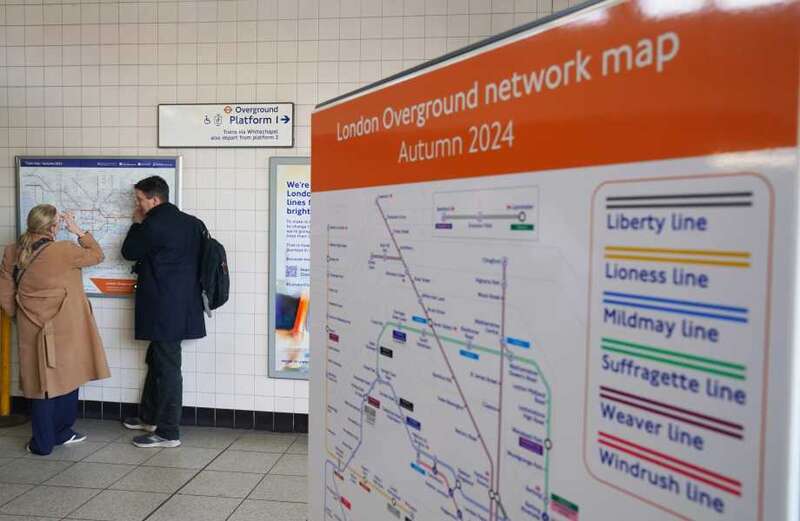A section of the London Overground has been renamed the Windrush line as part of a £6million overhaul.
The railway network - which was established in 2007 - is undergoing big changes in 2024.

What is the Windrush overground line named after?
The Windrush line has been named to celebrate the Windrush generation.
According to TfL, the name recognises the "wider importance of migration that has created a lasting legacy that continues to shape and enrich London's cultural and social identity today".
In re-imagining London's tube map, we are also honouring and celebrating different parts of London's unique local history and culture.
Spectacular New Year fireworks light up London sky as huge crowds celebrate across UK for first time in three years Mayor of London Sadiq Khan
The start of the Windrush generation was marked by the arrival of the HMT Empire Windrush in Essex in June 1948.
The ship carried over 1000 passengers, nearly 800 of which had migrated from Caribbean countries to help rebuild Britain after the Second World War.
The British Nationality Act, established in 1948, gave people from colonies the right to live and work in Britain, with many filling shortages in crucial industries such as construction, healthcare and transport.
Windrush Day is celebrated on June 22 each year to acknowledge British Caribbean communities and the contributions the Windrush generation and their descendants have made to the UK.
The Windrush scandal began in 2018 and refers to thousands of people who were threatened with deportation after arriving in the UK as children.
After rule changes were made in 2012, many children of the Windrush generation fell victim to laws aimed at stopping people from overstaying in the UK.
Despite living, working and paying tax in Britain for decades, they had their legal status changed overnight after the Hostile Environment Policy was introduced.
People were told they needed evidence, such as passports, to continue working but most had never applied for travel documents as they had arrived in the UK on the HMT Empire Windrush on their parents' passports.
It also emerged that in 2010, while Theresa May was the Home Secretary, thousands of landing cards that could have potentially stopped deportations had been destroyed.
More than 160 people were detained or deported as part of the scandal.
 Robbie Williams poised to launch his own brand of energy drinks to rival Prime
Robbie Williams poised to launch his own brand of energy drinks to rival Prime
An independent report released in March 2020 criticised the government for the way it had treated UK residents who were wrongly caught up in the government's drive to reduce illegal immigration.
The inquiry said that the scandal was both "foreseeable and avoidable".
The Windrush Compensation Scheme was established in April 2019, with over 15,000 people thought to be eligible.
The Windrush line is one of six sections that the London Overground has been divided into.
The other new line names are the Lioness line, the Liberty line, the Weaver line, the Suffragette line and the Mildmay line.
Historically, the London Overground lines have just been named after the stations that they travel between and have all been represented by orange lines on the network map.
As part of the rebrand, each line now has their own corresponding colour - with the Windrush line being represented by red on the map.
Where is the Windrush line?
The Windrush line is currently known as the Highbury and Islington line to Clapham Junction, New Cross, Crystal Palace and West Croydon.
The line runs through areas with strong ties to Caribbean communities, such as Dalston Junction, Peckham Rye and West Croydon.
Stops include Anerley, Brockley, Denmark Hill, Shoreditch High Street and Highbury and Islington.
Why were the London Overground lines renamed?
The London Overground routes have been renamed in the hopes that the new lines will make the network, previously described by users as a "mass of orange spaghetti", easier to navigate.
The new names, chosen to reflect London's "rich and diverse history", were announced in early 2024 but won't be made official until the end of the year.
TfL has confirmed that the lines were named after "a period of engagement" with staff, customers and local communities.
The transport network also consulted with local historians, academics and transport specialists about the rebrand.
Mayor of London Sadiq Khan said: "Giving each of the Overground lines distinct colours and identities will make it simpler and easier for passengers to get around.
"In re-imagining London's tube map, we are also honouring and celebrating different parts of London's unique local history and culture."



































